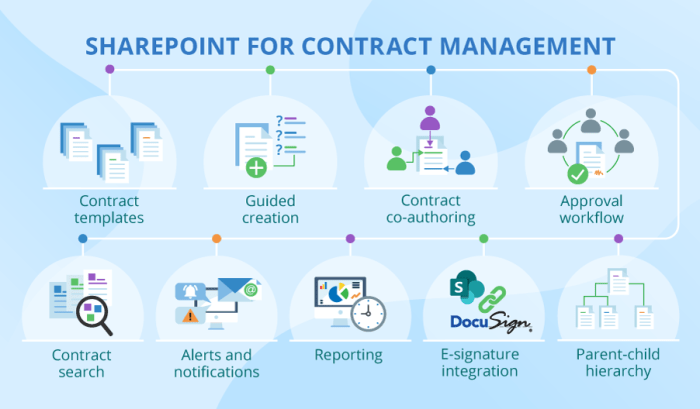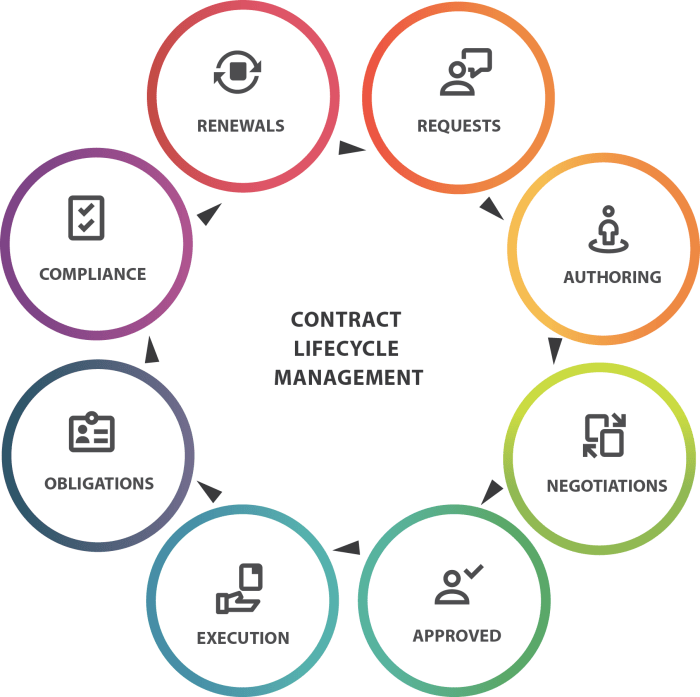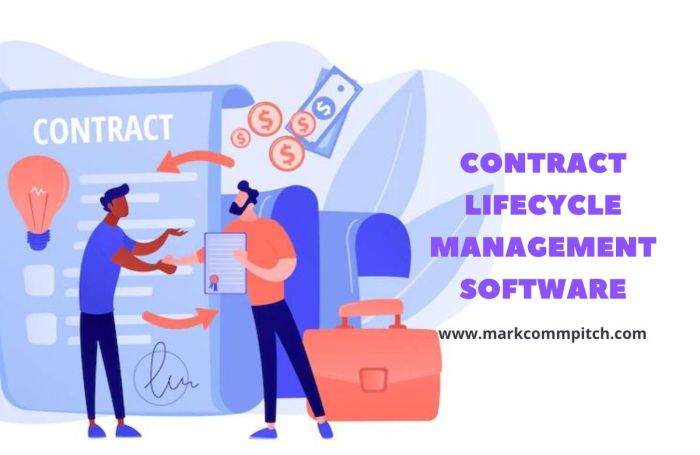Contract lifecycle management software – In today’s fast-paced business environment, efficient contract management is no longer a luxury; it’s a necessity. The traditional methods of managing contracts – often involving scattered emails, physical files, and spreadsheets – are prone to errors, delays, and significant financial risks. This is where Contract Lifecycle Management (CLM) software steps in, offering a centralized, automated, and streamlined approach to the entire contract process, from creation to renewal.
Understanding Contract Lifecycle Management (CLM) Software
CLM software is a sophisticated solution designed to automate and manage every stage of the contract lifecycle. This encompasses everything from authoring and negotiation to execution, performance monitoring, and ultimately, renewal or termination. By centralizing all contract-related information in a single, secure platform, CLM software drastically improves efficiency, reduces risk, and enhances compliance.

Source: ridzeal.com
Key Features of Effective CLM Software, Contract lifecycle management software
- Contract Authoring and Templates: Many CLM systems provide tools to create standardized contract templates, reducing manual effort and ensuring consistency across agreements. This often includes clause libraries and automated redlining features.
- Negotiation and Collaboration: Secure collaboration tools enable efficient negotiation with counterparties, allowing for real-time feedback and version control. This eliminates the back-and-forth of email chains and ensures all parties are on the same page.
- e-Signature Integration: Seamless integration with e-signature providers like DocuSign or Adobe Sign allows for quick and legally binding contract execution, eliminating the need for physical signatures and postal mail.
- Centralized Repository: A central repository stores all contracts, making it easy to search, retrieve, and manage documents. This ensures version control and prevents the risk of losing critical information.
- Workflow Automation: Automated workflows guide contracts through each stage of the lifecycle, ensuring timely completion and reducing manual intervention. This includes reminders, alerts, and automated approvals.
- Performance Monitoring and Reporting: CLM systems often include tools to monitor contract performance, track key metrics, and generate reports on compliance, risk, and financial impact.
- Risk Management: Advanced CLM solutions can identify potential risks within contracts, such as clauses that could lead to disputes or financial losses. This proactive risk management helps mitigate potential problems before they arise.
- Analytics and Reporting: Comprehensive reporting and analytics dashboards provide valuable insights into contract performance, helping businesses make data-driven decisions.
- Integration with Other Systems: The best CLM systems integrate seamlessly with other enterprise software, such as CRM, ERP, and legal systems, creating a unified view of business operations.
Benefits of Implementing CLM Software
The advantages of adopting CLM software are numerous and impactful across various departments within an organization. Here are some key benefits:

Source: co.uk
- Improved Efficiency: Automation streamlines the contract process, reducing manual tasks and freeing up valuable time for employees.
- Reduced Costs: By minimizing errors and delays, CLM software can significantly reduce operational costs associated with contract management.
- Enhanced Compliance: CLM systems help ensure compliance with relevant regulations and internal policies, mitigating legal and financial risks.
- Better Risk Management: Proactive identification and mitigation of contract risks protect the organization from potential disputes and financial losses.
- Improved Visibility and Control: A centralized repository provides a clear overview of all contracts, improving transparency and control over the entire contract lifecycle.
- Increased Revenue: Faster contract turnaround times and improved negotiation can lead to increased revenue and faster deal closure.
- Stronger Relationships with Stakeholders: Improved communication and collaboration facilitate stronger relationships with internal teams, legal departments, and external partners.
Choosing the Right CLM Software: Contract Lifecycle Management Software
Selecting the right CLM software requires careful consideration of your organization’s specific needs and requirements. Factors to consider include:
- Scalability: Ensure the software can adapt to your organization’s growth and changing needs.
- Integration Capabilities: Consider the software’s ability to integrate with existing systems.
- User-Friendliness: Choose software that is intuitive and easy for your team to use.
- Security and Compliance: Prioritize software that meets your organization’s security and compliance requirements.
- Pricing and Support: Evaluate the cost of the software and the level of support provided by the vendor.
Frequently Asked Questions (FAQ)
- Q: What is the cost of CLM software? A: The cost of CLM software varies widely depending on the features, scalability, and vendor. Expect to pay a monthly or annual subscription fee, often based on the number of users or contracts managed.
- Q: How long does it take to implement CLM software? A: Implementation time depends on the complexity of your organization’s needs and the chosen software. It can range from a few weeks to several months.
- Q: What are the key metrics to track with CLM software? A: Key metrics include contract cycle time, contract value, compliance rate, and risk scores.
- Q: Can CLM software integrate with my existing systems? A: Many CLM systems offer robust integration capabilities with various enterprise software, such as CRM, ERP, and legal systems. However, it’s crucial to verify compatibility before selecting a solution.
- Q: Is CLM software secure? A: Reputable CLM vendors prioritize security and compliance, employing robust measures to protect sensitive contract data. Look for software that adheres to industry best practices and relevant regulations.
Conclusion
Contract Lifecycle Management software is a powerful tool that can significantly improve efficiency, reduce risk, and enhance compliance within any organization. By streamlining the entire contract process, CLM empowers businesses to focus on strategic initiatives while ensuring contracts are managed effectively and efficiently. Investing in a robust CLM solution is a strategic move towards operational excellence and sustainable growth.

Source: comparebiztech.com
References
- Gartner (For market research and insights on CLM)
- Forrester (For independent research and analysis on CLM)
- IDC (For market intelligence and analysis on CLM)
Call to Action
Ready to transform your contract management process? Contact us today for a free consultation and learn how CLM software can benefit your organization.
Helpful Answers
What is the cost of CLM software?
The cost varies greatly depending on the vendor, features, and number of users. Expect a range from affordable subscription models to more expensive enterprise solutions.
How long does it take to implement CLM software?
Implementation timelines depend on the complexity of the system and the organization’s needs. Smaller implementations might take weeks, while larger ones could take months.
Can CLM software integrate with our existing systems?
Many CLM platforms offer integrations with popular CRM, ERP, and other business applications. Check with vendors to confirm compatibility.
